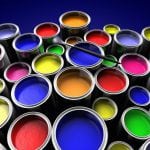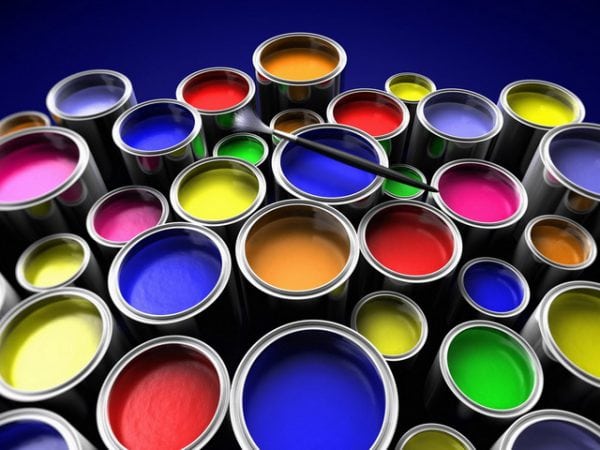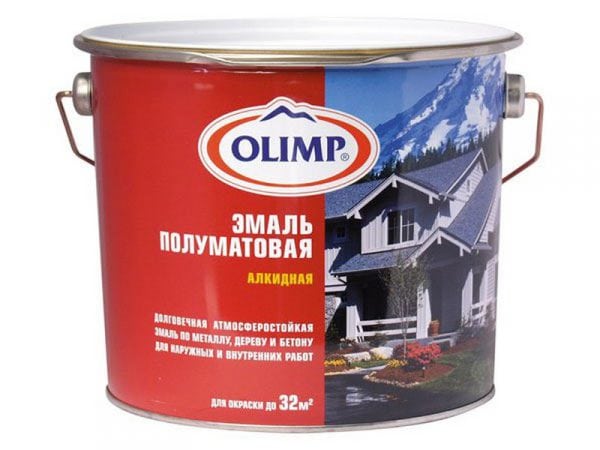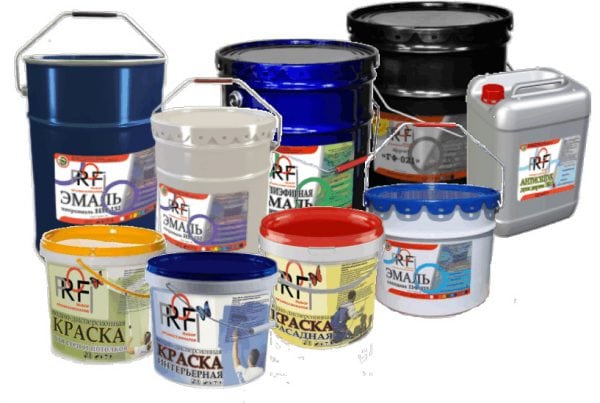Question: "What is the difference between paint and enamel?" - It sounds very often, but even those who are related to paints by profession are not always able to give a clear answer. There is a widespread belief that enamel is the same as enamel paint. Many people believe that the whole difference between enamel and paint is that the first material is shiny and the second is matte. Of course, this conclusion is incorrect. Despite the apparent similarity of the definitions, there are more significant differences between the definitions of “paint”, “enamel” and “enamel paint” than the presence or absence of gloss.
Terminology and Composition
First of all, it must be said that there is nothing in common between enamel and paints and varnishes. Enamel is a vitreous formation, including quartz, alkali metal oxides, pigments and other components. After application to the base, these components are thermally processed, resulting in a very strong, wear-resistant protective layer. Unlike paints that are applied to the surface of the product, enamels are fused. As an example of the use of enamel, enameled utensils, enamelled bathtubs, some types of ceramics, etc.
Paint is a broader concept than enamel painting. The first enamel paints and varnishes appeared after chemists learned how to modify pentaphthalic drying oil with alkyd resins. Unlike the enamel composition, the usual paintwork material is made on the basis of linseed oil (natural drying oil), brought to a boil. The difference in composition is noticeable even by marking: on cans with enamel coatings there is always the abbreviation PF (pentaphthalic), but simple paints contain the MA (oil) index. Enamel paint differs from ordinary paint in a smoother and more durable coating.
Enamel paint is a liquid or paste-like pigments whose medium is a solution of film-forming agents in organic solvents. As a film former, varnish, alkyd resin or other substance with similar physicochemical characteristics is usually used. When the enamel paint material dries, an opaque film remains on the surface, which differs in different cases both in color and texture.
As for the gloss of the coating, this indicator depends not only on the film former, but also on the additives included in the paintwork, and therefore some ordinary paints shine much more intensely than enamel paints.
It is worth mentioning such a characteristic sign of enamel composition as a pungent smell. For ordinary paints, an unpleasant strong odor is not necessary at all, especially if they are made on a water basis: the smell may be absent, weak, or even aromatic.
Despite the above, it should be noted that enamel paints are not always the best choice. The feasibility of using enamel paints and varnishes depends on specific circumstances. For example, if alkyd enamel paint is the best choice for wooden window frames, then for a park bench it is better to opt for polyurethane paint.
With hardness and elasticity, the situation is more clear: enamel coatings are stronger. It should also be noted the high moisture resistance of enamels in comparison with conventional paints that swell and crack under the influence of moisture.
Enamel paints are a relatively small segment of coatings in which the compositions are characterized by high strength and opacity. Enamels are especially often used in industry when it is necessary to prevent the development of corrosive processes.
to contents ↑Types of enamel coatings
There are many varieties of enamel compounds. Only the most common are listed below:
- Nitrocellulose. They contain cellulose nitrate, pigmenting agents, additives, fillers and a solvent. Most often used for painting metal, concrete and wood. Packed in jars and aerosol cans. A characteristic feature is the pungent acetone odor. Combination with other paints is unacceptable without appropriate technological instructions.
- Organosilicon. Such compositions can be applied to materials and surfaces of all types. Characteristic qualities of organosilicon enamel coatings include moisture resistance, increased strength and wear resistance. This type of paints and varnishes can only be combined with dried acrylic coating.
- Pentaphthalic and glyphthalic. They belong to the subspecies of oil paints and are made from combined and synthetic drying oils after modification with alkyds. This type of coatings is compatible with polyurethane-alkyd, acrylic and epoxy compounds.
- Acrylic They are an aqueous dispersion based on latex. Acrylic enamels can only be combined with those paints and varnishes based on water. However, it is possible to combine with other varieties of paints, subject to appropriate preparation.
- Urethane and alkyd-urethane. They are distinguished by very high strength and resistance to wear. Such compositions can be applied to surfaces painted with oil, epoxy or pentaphthalic coatings.
The list of types of enamel paints is actually much wider. To familiarize yourself with the full list of compositions, it is recommended to consider special material compatibility tables, where the names and characteristics of enamels are indicated.
to contents ↑Note! It is strongly not recommended to apply an oil-based paint and varnish composition on nitro enamel, since nitrocellulose coagulates upon contact with another solvent. If you mix these types of coatings, the surface will begin to bubble and swell.
Alkyd enamels and oil paints
Alkyd enamel coatings can be applied on surfaces painted with oil paints. Below is an instruction for applying paintwork yourself:
- As always, it is necessary to prepare the surface before applying the paint composition. Without preparatory work, it is impossible to achieve proper adhesion: the paint will peel off. Preparation includes removing old coatings. Note that the old coating should be removed only if it easily moves away under mechanical stress. If the coating is very strong, we remove dirt and dust from it, and then we process it with sandpaper with large grains.
- After work, we wipe away all the dust formed after work with sandpaper. We wash the surface with warm soda solution. Next, we again treat the surface with clean warm water. Wait until the surface is completely dry.
- Open the jar of paint and varnish material, dilute the composition with a solvent (white spirit or solvent), mix the contents well.
- Apply enamel paintwork in three thin layers. Moreover, each subsequent layer is applied only after the previous one has completely dried.
Advice! Enamel paint for the second and third layers is recommended to be prepared a little thicker than for the first.
At the end of the article, we recall that working with enamel coatings is possible only with goggles, a respirator and gloves. Alkides are very toxic both in the process of painting the surface and during drying.








Everything seems to be good and clear, but .. Explain, please. If enamel paint is both stronger and more elastic and more resistant to moisture, then why is it better to choose ordinary paint for a park bench?